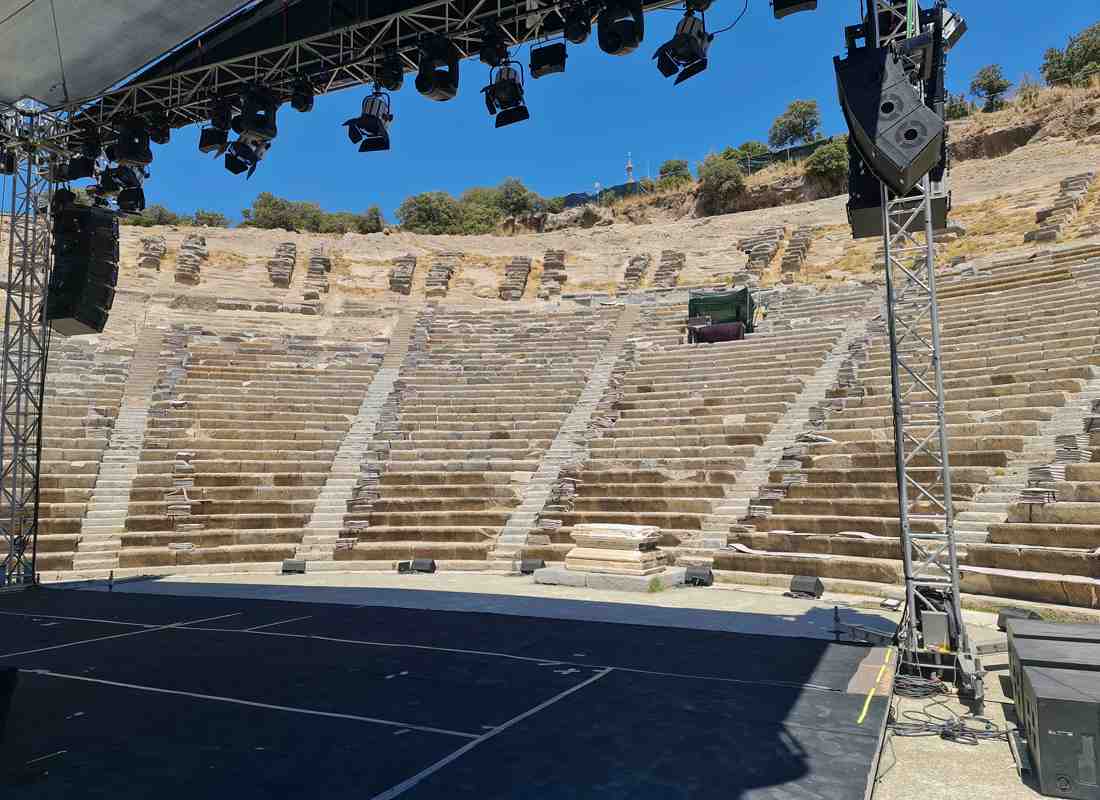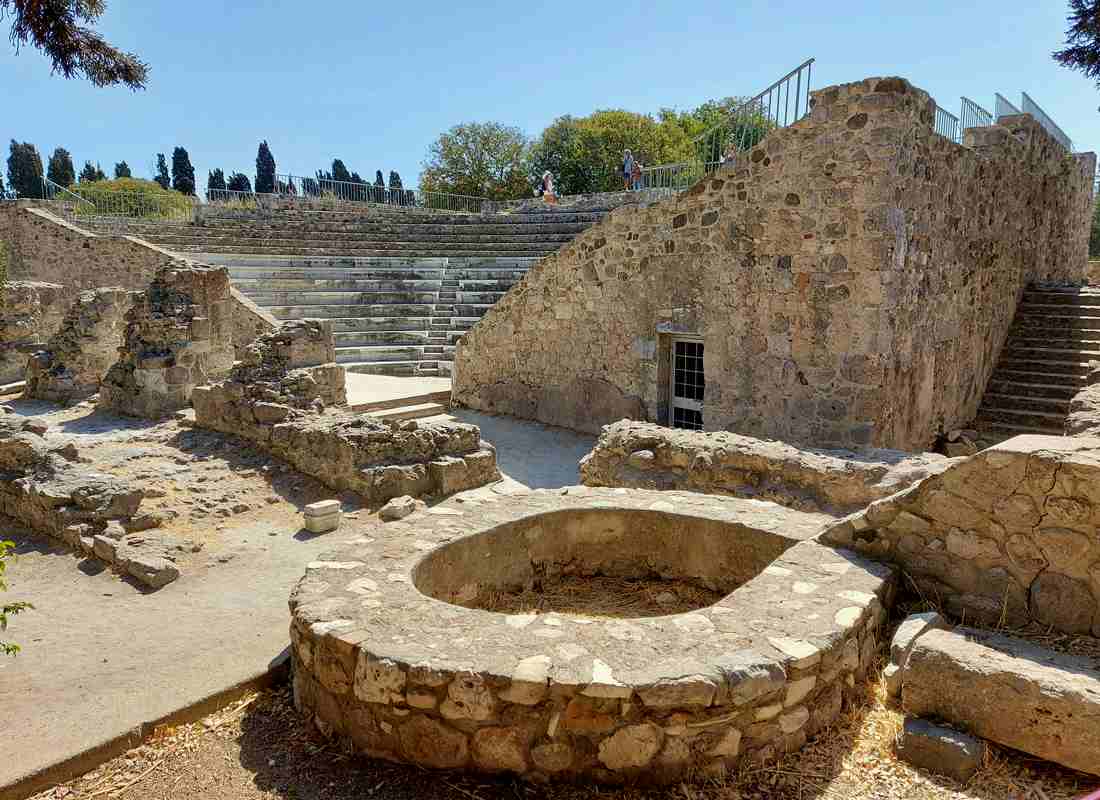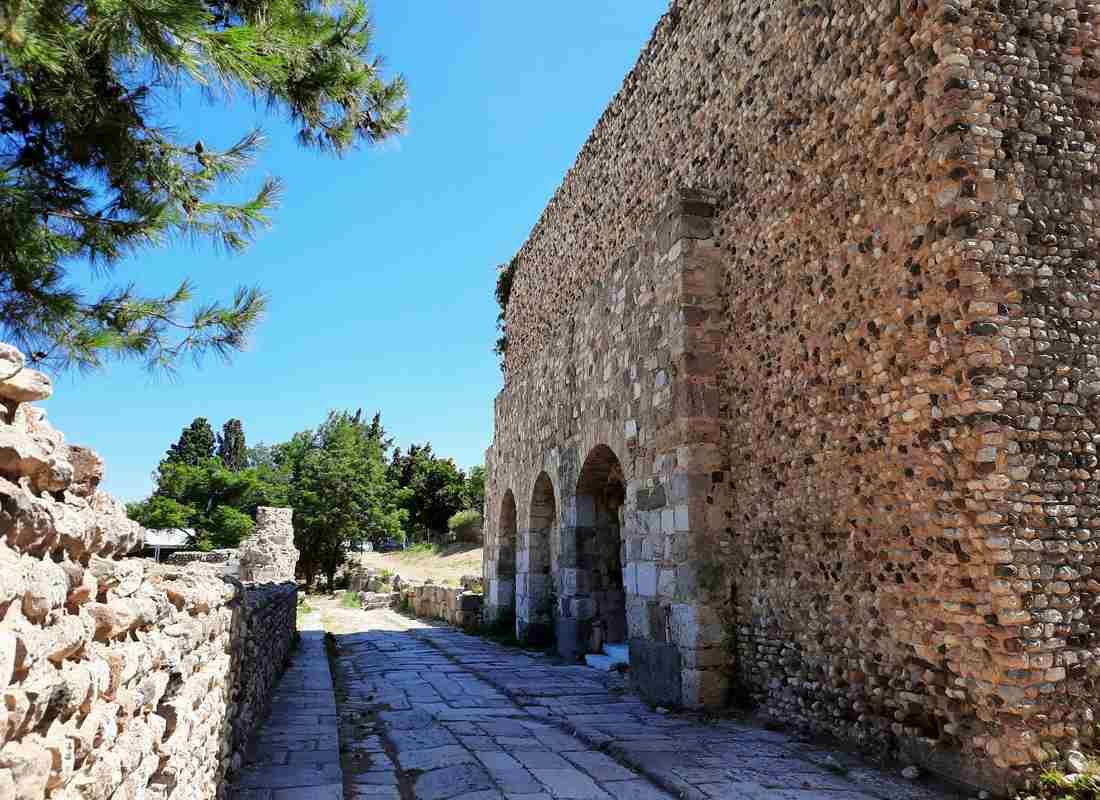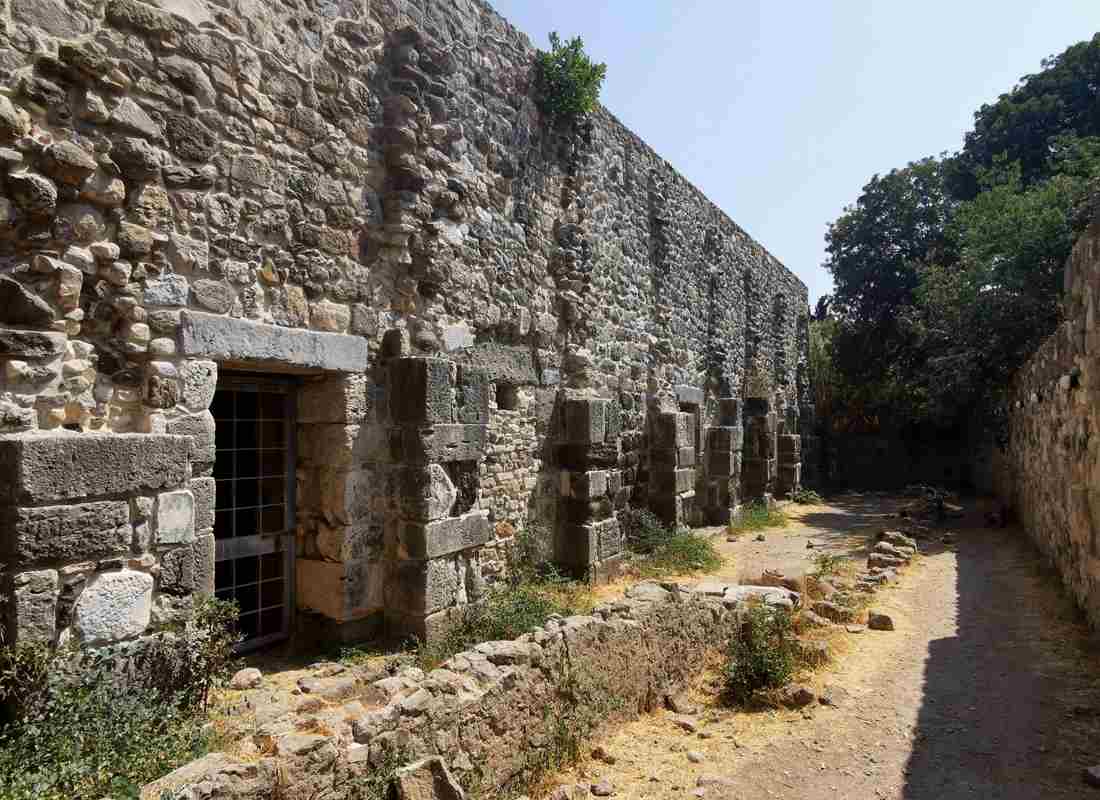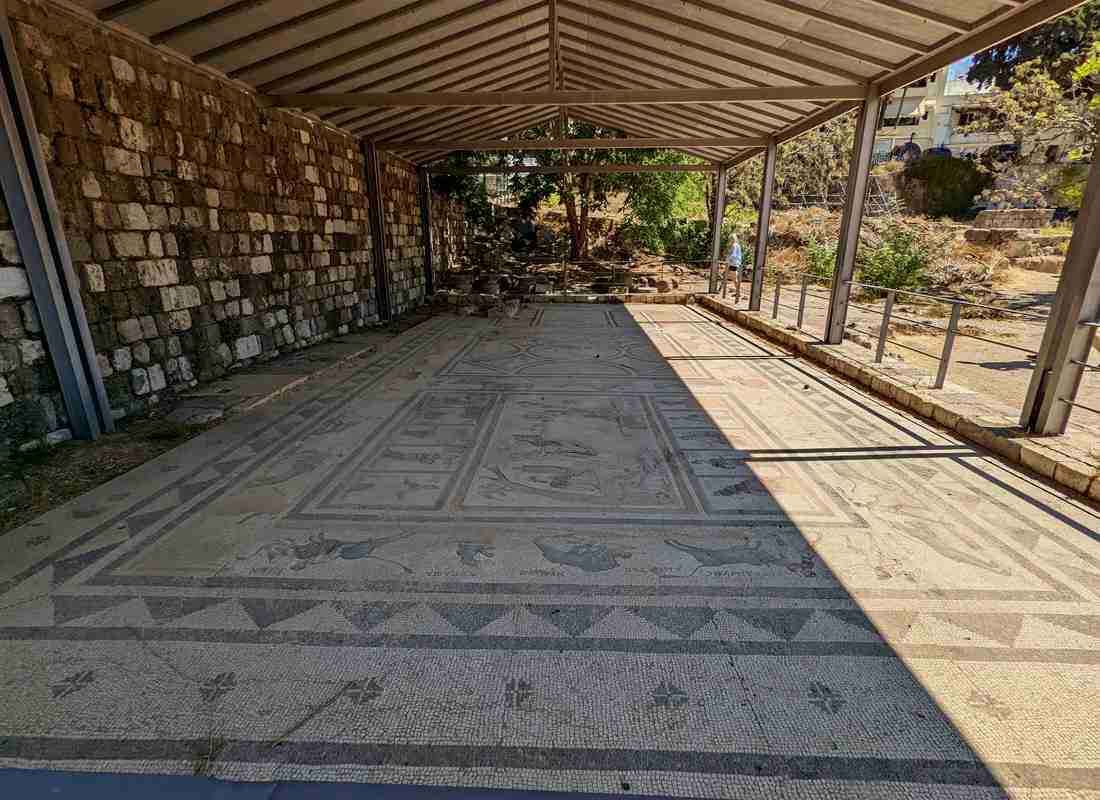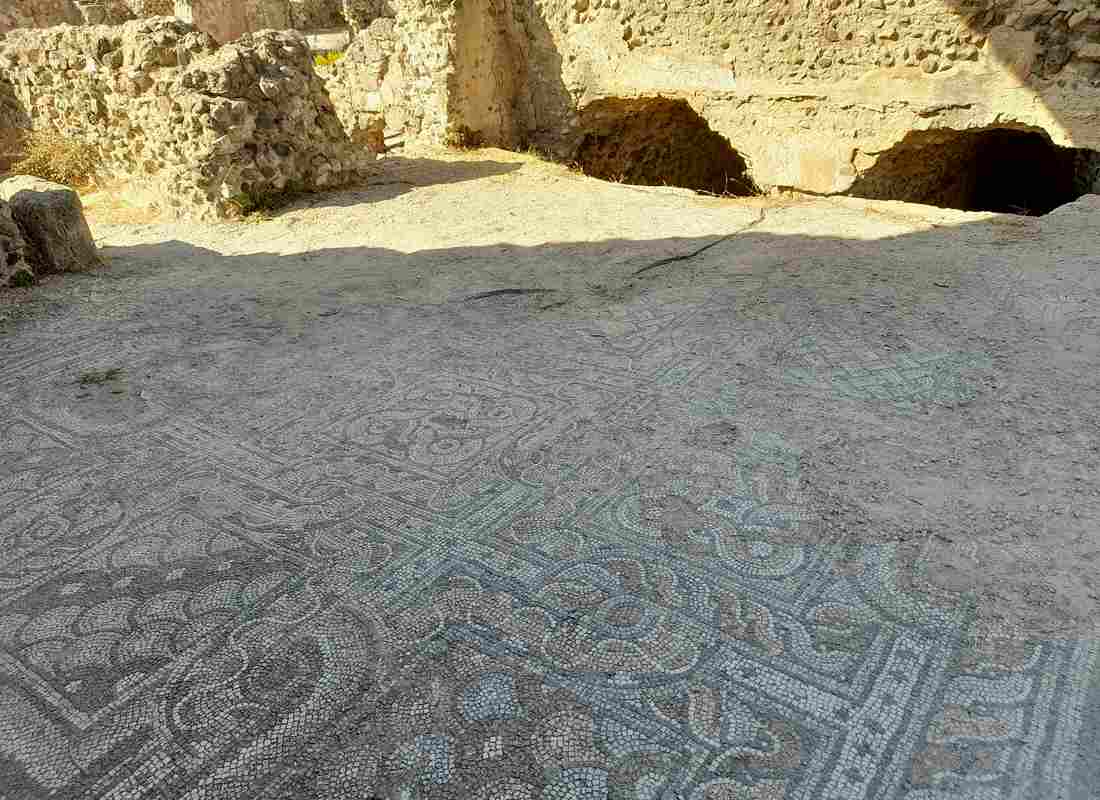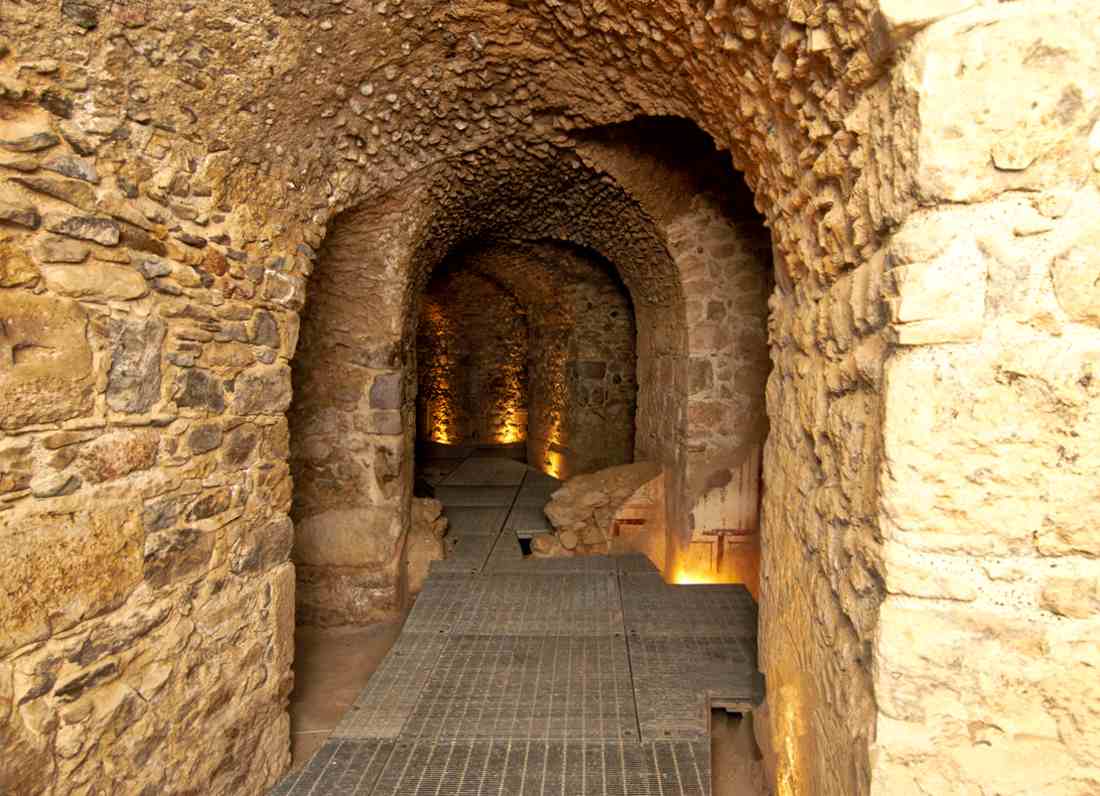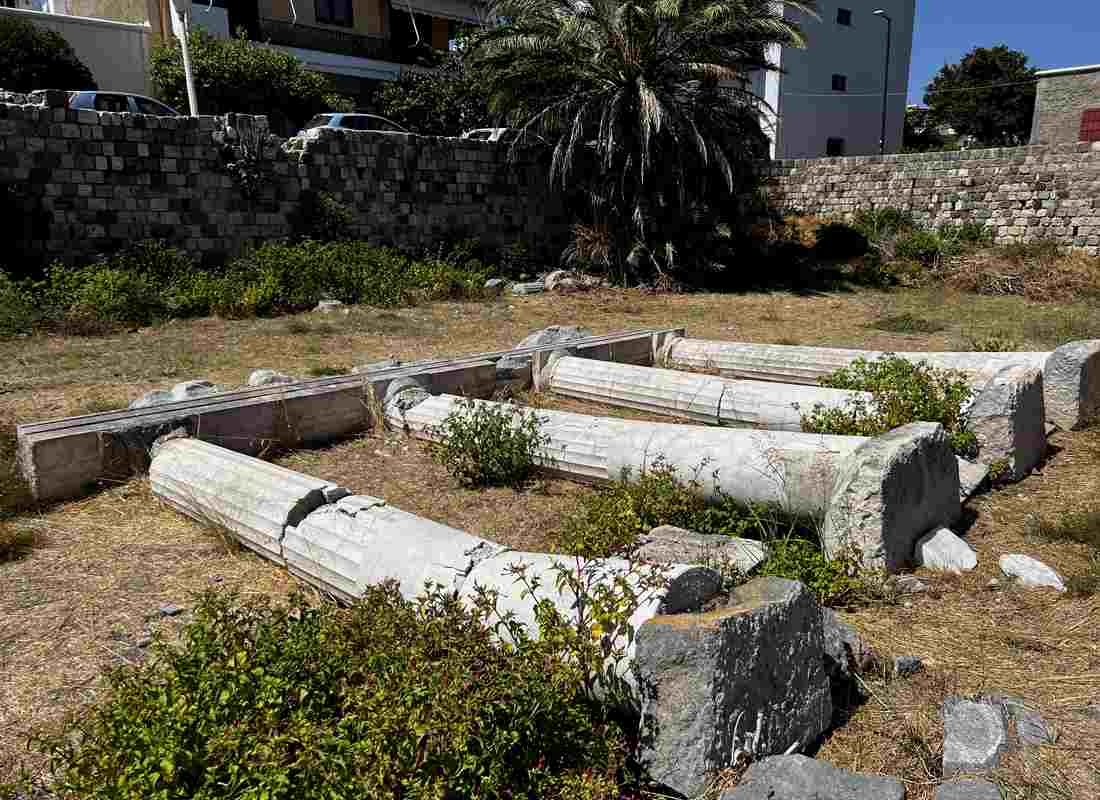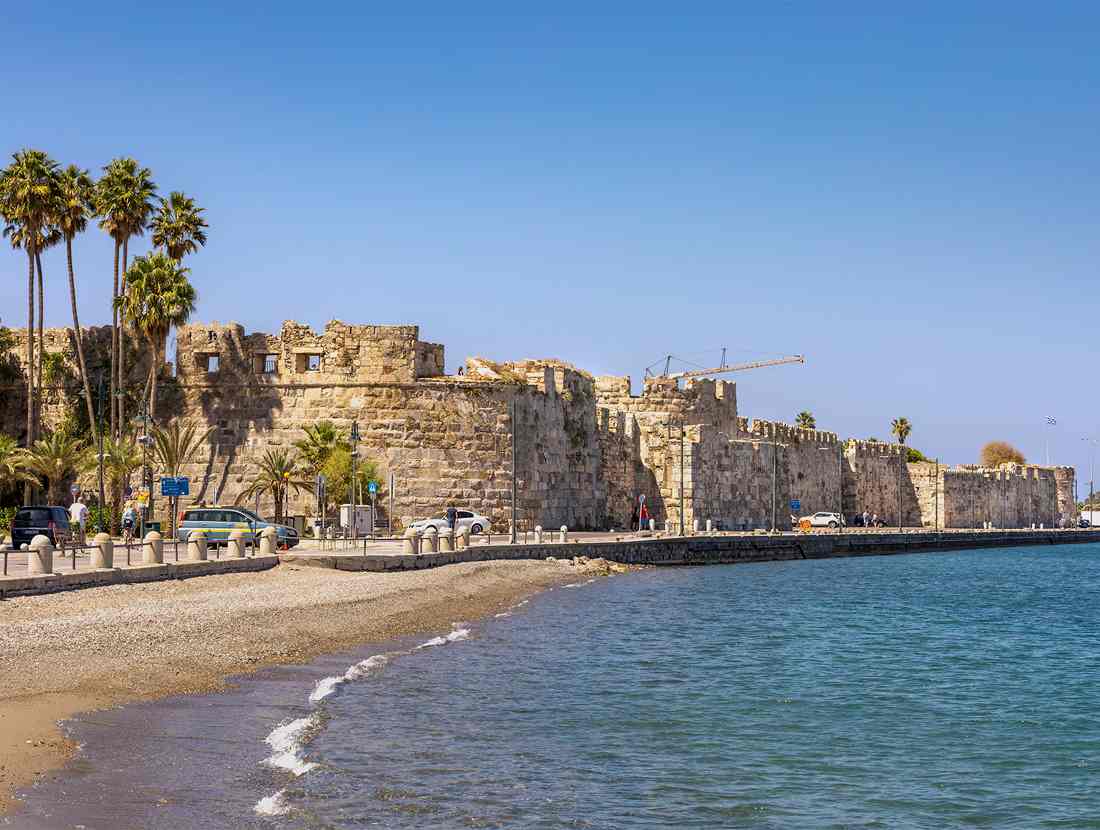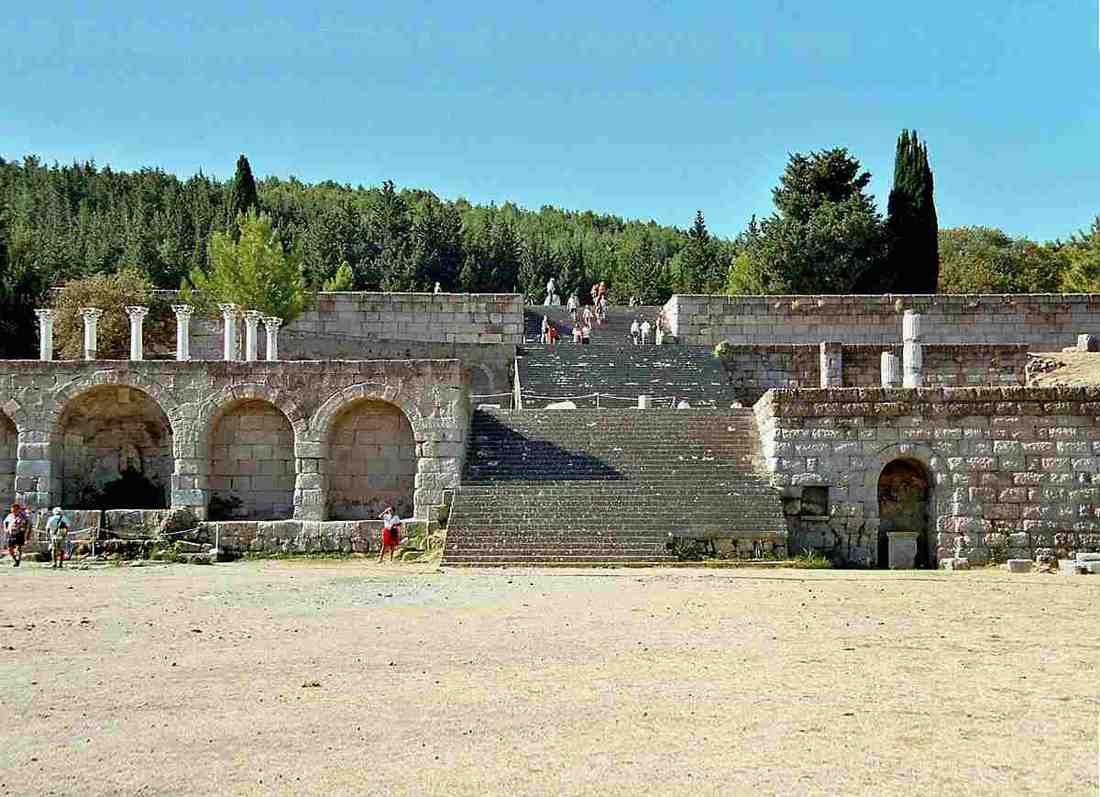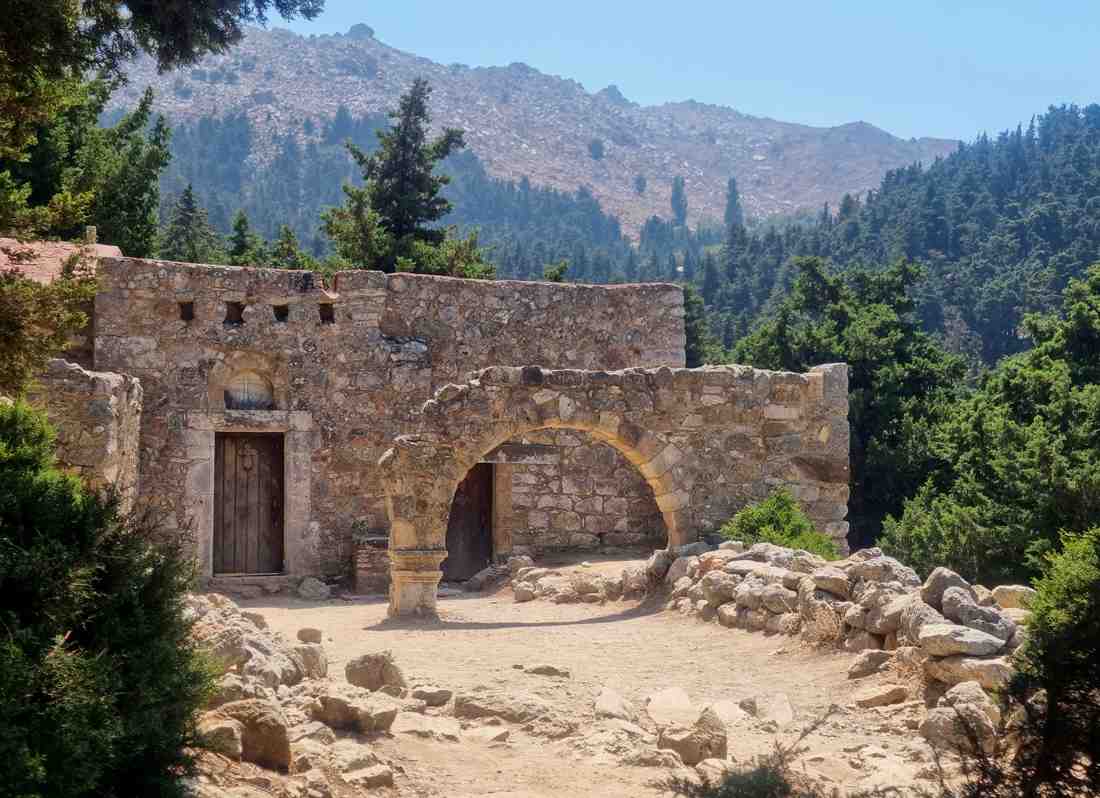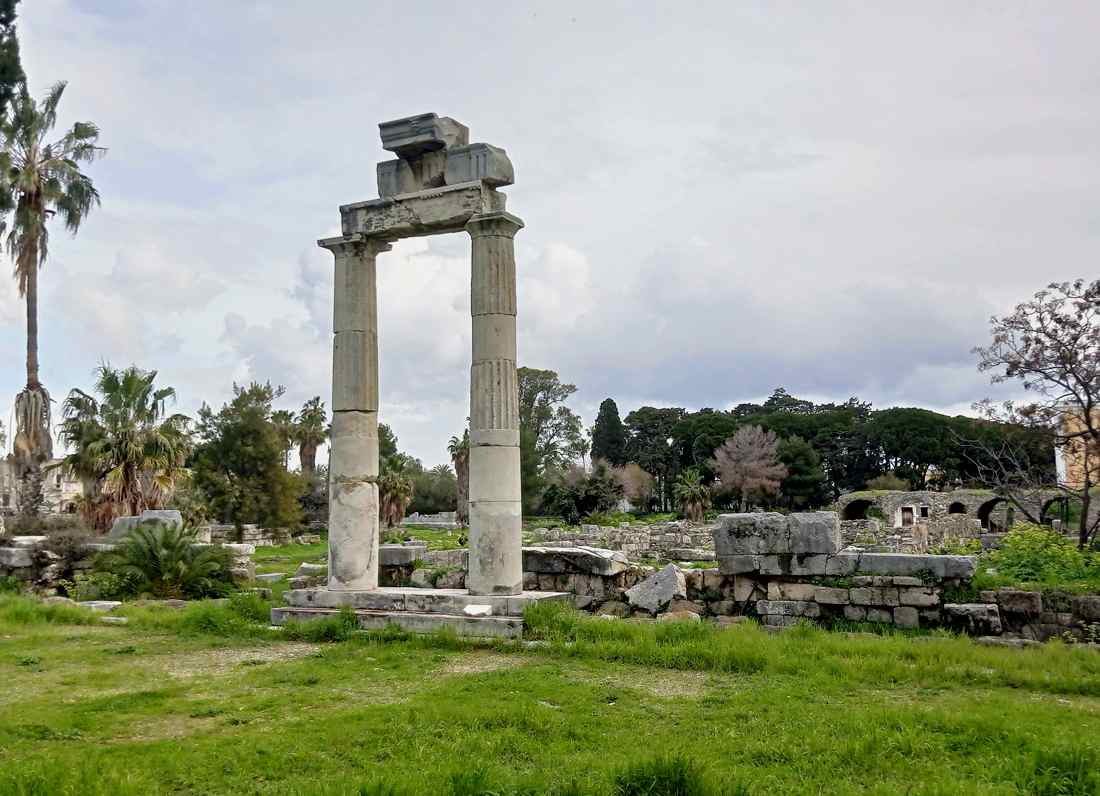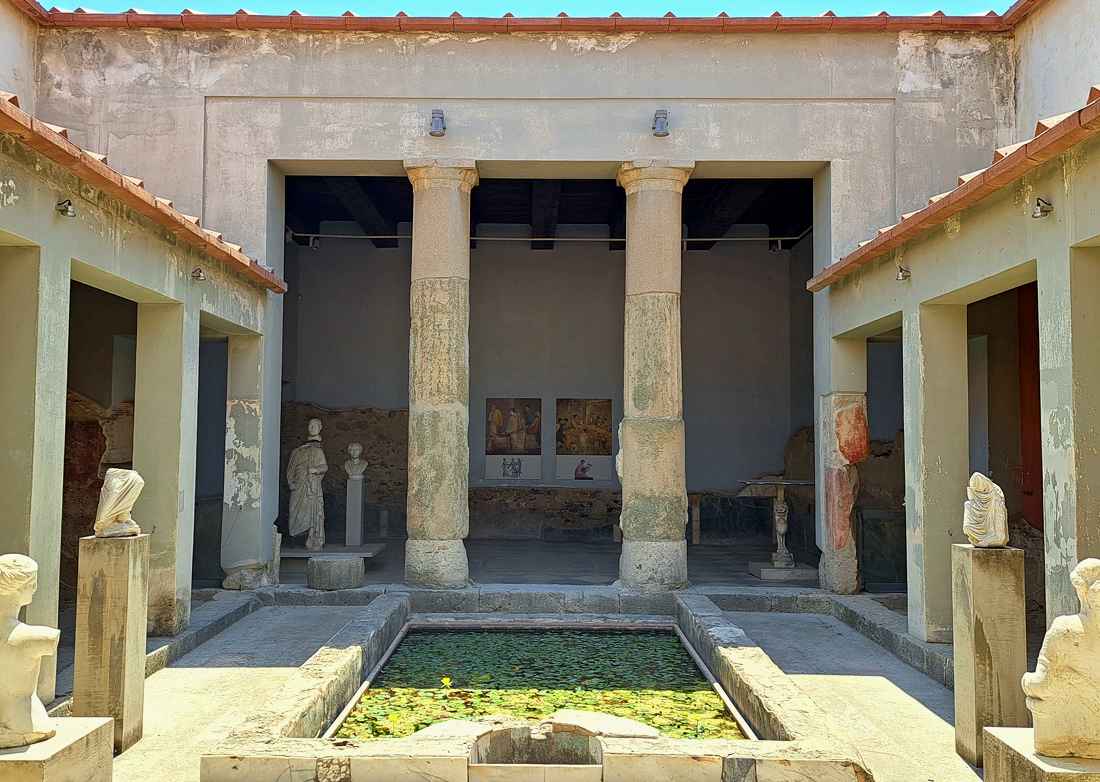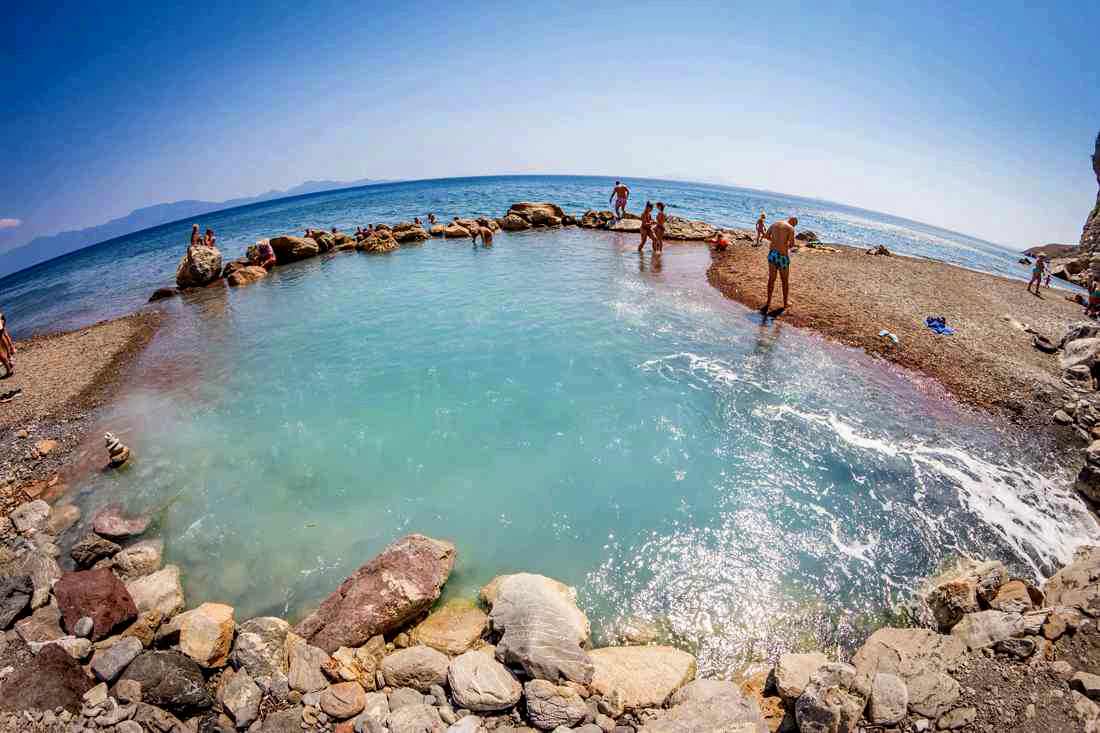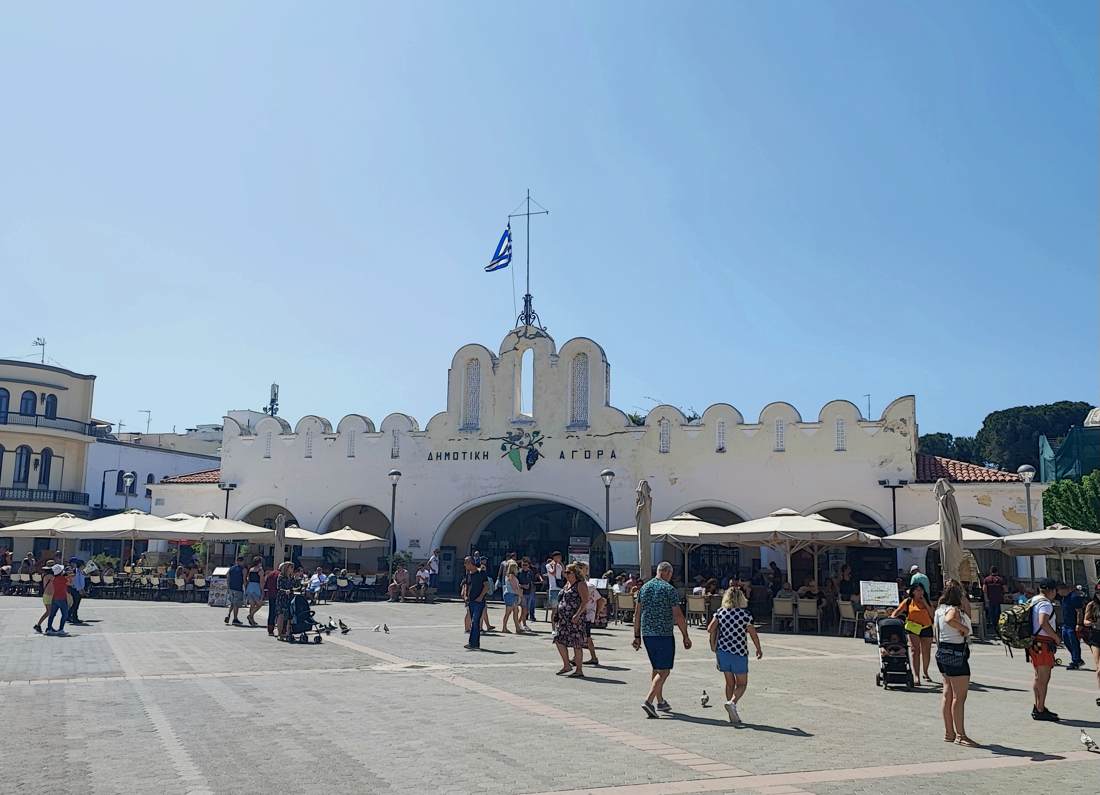
Roman Odeon of Kos
The Roman Odeon is considered one of the most important public buildings of the ancient city. It was found by Italian archaeologist Laurenzi during excavations carried out in 1929. The Odeon was built in the 2nd century AD and is believed to have been built on the site of an earlier public building, which may have been the city council. Although the Odeon was built for music competitions and other public events. The Odeon was simultaneously used as a seat for the city council, and its capacity is estimated to be about 750 people. The structure used to have a domed roof, which has not survived to this day. The Odeon has fourteen rows with marble seats, nine of which have been restored and divided by a corridor into two parts, the lower part was divided into tribunes with four staircases. Below the grandstands were two semicircular arcades and a series of rooms that served either as stores or workshops. The stage had the unusual shape of an irregular pentagon and consisted of two parts, the foreground and the background, which were connected by three entrances. On either side of the stage were two more doors leading into alleys. During excavations at the Odeon were found 18 marble sculptures, the most important was the statue of Hippocrates, which can now be seen in the Archaeological Museum of the island. The Odeon hosts various cultural events, especially during the summer.
Guest reviews
You may also be interested in similar information
Neratija Castle
Kos, Greece
Asklepion of Kos Island
Kos, Greece
Plaka - Peacock forest
Kos, Greece
Fortress of Paleo Pyli
Kos, Greece
Ancient agora of Kos
Kos, Greece
Casa Romana - Roman Villa
Kos, Greece
Spa beach Terma
Kos, Greece
Municipal market of Kos
Kos, Greece


